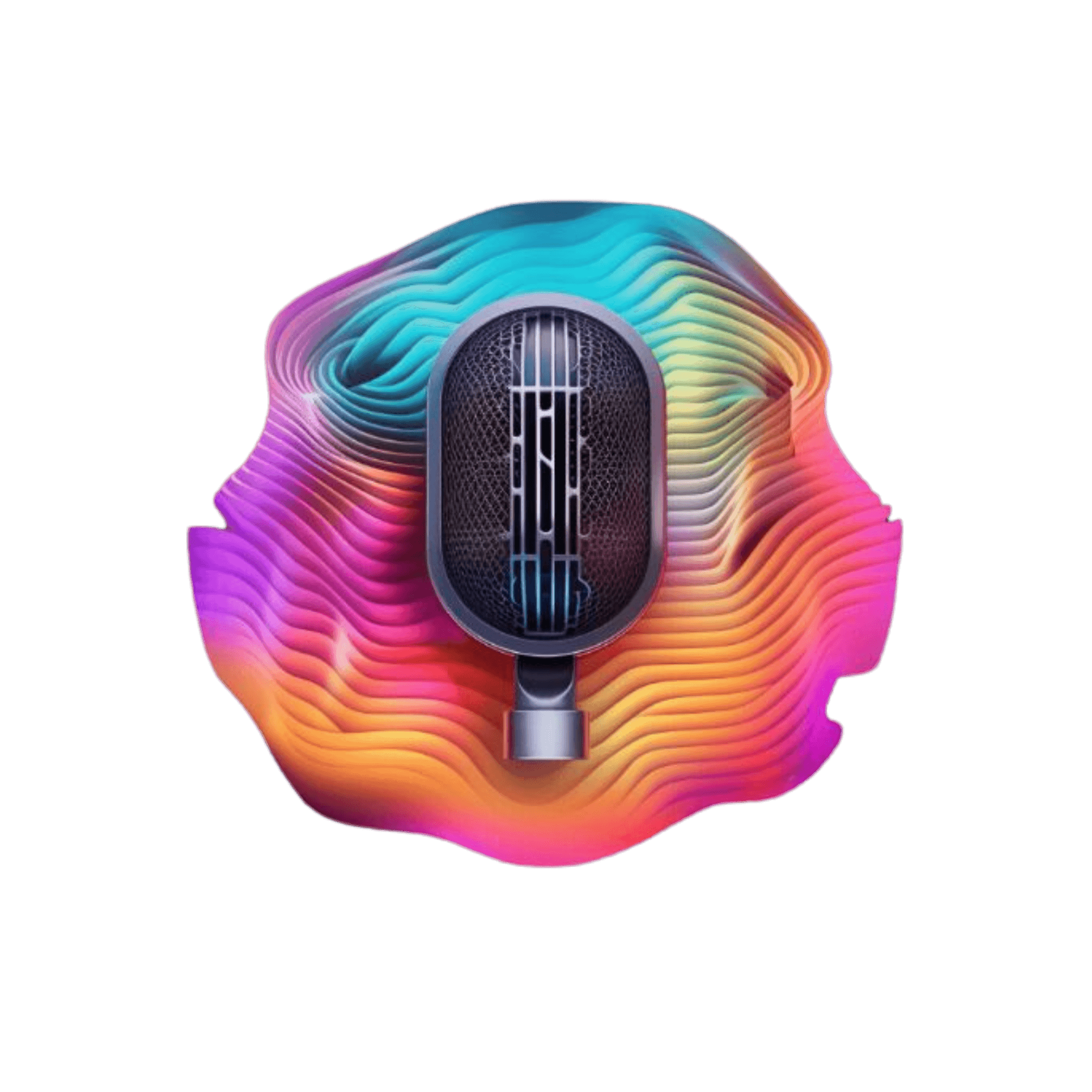
FROM OUR BLOG
FROM OUR BLOG
FROM OUR BLOG
Why Creators Are Switching from Murf AI to Voicestars for Music and Voiceover
Jun 20, 2025



Table of Contents
What Is Murf AI and Why It’s Popular
What Murf AI Does Well (and Where It Falls Short)
Why Creators Need More Than Just Corporate Voiceover
How Voicestars Redefines AI Voices for Music, Emotion, and Realism
Best AI Voices for Music and Narration on Voicestars
Step-by-Step Guide on How to Use Our AI Voice Cloning App
Where to Share AI Audio Made with Voicestars
What Is Murf AI and Why It’s Popular
Murf is a cloud-based AI voice generator known for professional narration and text-to-speech services. Many businesses use Murf for:
🧑🏫 E-learning narration
🧑💻 Corporate training videos
📊 Explainer videos for startups
📞 Voiceovers in customer service bots
🎓 Online course material
It offers clean, robotic-style narration in various global languages. But here’s the problem: Murf is built for boardrooms, not for bold creativity. That’s why musicians, podcasters, and storytellers often seek alternatives.

What Murf AI Does Well (and Where It Falls Short)
✅ Murf AI Strengths:
Polished corporate narration
Clear pronunciation and tone
Multilingual TTS
Simple interface for slide decks
❌ Murf AI Limitations:
No support for singing or musical phrasing
Limited vocal emotion (joy, sadness, fear, etc.)
No celebrity or character voices
Weak at handling rhythm or tonal flow for content like lo-fi music, voice-driven remixes, or poetry
This is why more content creators are turning to platforms like Voicestars—a tool designed not just for speech, but for performance.

Why Creators Need More Than Just Corporate Voiceover
For musicians, YouTubers, podcasters, and storytellers, a flat, corporate voice doesn’t cut it. Murf might be fine for narration, but creative content demands:
🎵 Musical phrasing
🗣️ Emotional range (anger, joy, sorrow, sarcasm)
🎙️ Celebrity voice personalization
🔁 Loop compatibility and tempo matching
💿 WAV output for studio editing
This is why Voicestars is dominating the music and voice cloning space, especially among creators in genres like lo-fi, trap, R&B, ASMR, storytelling, and even meme culture.

How Voicestars Redefines AI Voices for Music, Emotion, and Realism
Creators prefer Voicestars over Murf because it supports:
🎶 Singing and voice cloning from celebrity styles
📈 High-quality output in WAV for editing and mastering
🎤 Voices that match mood and genre (R&B, pop, rap, lo-fi)
🧠 Realistic emotion and intonation
🎭 Multiple delivery styles: whisper, shout, melody, or monologue
Voicestars supports creators who want voice performance, not just clean text-to-speech narration.
Here are examples of how Voicestars is used:
Drake AI vocals for rap covers
Billie Eilish for whispery lo-fi vocals
Ariana Grande for dreamy pop remixes
Kanye West for hard-hitting voice samples
SZA for sultry, R&B-style narration
The Weeknd for melancholic singing hooks
Step-by-Step Guide: Create your favourite Ai voice with Voicestars AI
Video Guide
Written Guide
1. Visit the Voicestars Homepage
Go to Voicestars and click “Try now.”

2. Select Your AI Voice or Track
Choose from Bollywood stars, regional accents, or fictional voices.

3. Upload a Song or Add Text for Remixing
Insert an audio clip or type song lyrics for a quick remix.

4. Download and Share Your VoiceTips for Making the Most of AI Voice Covers

Where to Share AI Audio Made with Voicestars
Once you've created expressive, professional AI voice tracks using Voicestars, share them on:
Bandcamp — sell lo-fi or experimental tracks
YouTube — music videos, explainers, or AI song challenges
SoundCloud — test unreleased voice experiments
Audius — for AI music discovery
Instagram Reels — meme voiceovers and music snippets
Spotify for Podcasters — launch storytelling or narrative series
Reddit — share in AI music, voice synthesis, or creator subs

Related Readings
Table of Contents
What Is Murf AI and Why It’s Popular
What Murf AI Does Well (and Where It Falls Short)
Why Creators Need More Than Just Corporate Voiceover
How Voicestars Redefines AI Voices for Music, Emotion, and Realism
Best AI Voices for Music and Narration on Voicestars
Step-by-Step Guide on How to Use Our AI Voice Cloning App
Where to Share AI Audio Made with Voicestars
What Is Murf AI and Why It’s Popular
Murf is a cloud-based AI voice generator known for professional narration and text-to-speech services. Many businesses use Murf for:
🧑🏫 E-learning narration
🧑💻 Corporate training videos
📊 Explainer videos for startups
📞 Voiceovers in customer service bots
🎓 Online course material
It offers clean, robotic-style narration in various global languages. But here’s the problem: Murf is built for boardrooms, not for bold creativity. That’s why musicians, podcasters, and storytellers often seek alternatives.

What Murf AI Does Well (and Where It Falls Short)
✅ Murf AI Strengths:
Polished corporate narration
Clear pronunciation and tone
Multilingual TTS
Simple interface for slide decks
❌ Murf AI Limitations:
No support for singing or musical phrasing
Limited vocal emotion (joy, sadness, fear, etc.)
No celebrity or character voices
Weak at handling rhythm or tonal flow for content like lo-fi music, voice-driven remixes, or poetry
This is why more content creators are turning to platforms like Voicestars—a tool designed not just for speech, but for performance.

Why Creators Need More Than Just Corporate Voiceover
For musicians, YouTubers, podcasters, and storytellers, a flat, corporate voice doesn’t cut it. Murf might be fine for narration, but creative content demands:
🎵 Musical phrasing
🗣️ Emotional range (anger, joy, sorrow, sarcasm)
🎙️ Celebrity voice personalization
🔁 Loop compatibility and tempo matching
💿 WAV output for studio editing
This is why Voicestars is dominating the music and voice cloning space, especially among creators in genres like lo-fi, trap, R&B, ASMR, storytelling, and even meme culture.

How Voicestars Redefines AI Voices for Music, Emotion, and Realism
Creators prefer Voicestars over Murf because it supports:
🎶 Singing and voice cloning from celebrity styles
📈 High-quality output in WAV for editing and mastering
🎤 Voices that match mood and genre (R&B, pop, rap, lo-fi)
🧠 Realistic emotion and intonation
🎭 Multiple delivery styles: whisper, shout, melody, or monologue
Voicestars supports creators who want voice performance, not just clean text-to-speech narration.
Here are examples of how Voicestars is used:
Drake AI vocals for rap covers
Billie Eilish for whispery lo-fi vocals
Ariana Grande for dreamy pop remixes
Kanye West for hard-hitting voice samples
SZA for sultry, R&B-style narration
The Weeknd for melancholic singing hooks
Step-by-Step Guide: Create your favourite Ai voice with Voicestars AI
Video Guide
Written Guide
1. Visit the Voicestars Homepage
Go to Voicestars and click “Try now.”

2. Select Your AI Voice or Track
Choose from Bollywood stars, regional accents, or fictional voices.

3. Upload a Song or Add Text for Remixing
Insert an audio clip or type song lyrics for a quick remix.

4. Download and Share Your VoiceTips for Making the Most of AI Voice Covers

Where to Share AI Audio Made with Voicestars
Once you've created expressive, professional AI voice tracks using Voicestars, share them on:
Bandcamp — sell lo-fi or experimental tracks
YouTube — music videos, explainers, or AI song challenges
SoundCloud — test unreleased voice experiments
Audius — for AI music discovery
Instagram Reels — meme voiceovers and music snippets
Spotify for Podcasters — launch storytelling or narrative series
Reddit — share in AI music, voice synthesis, or creator subs

Related Readings
More Update




